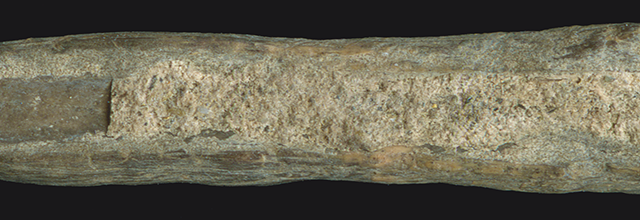SUNSET CREEK SITE REPORT
AUTHOR'S NOTES - 2014
Note 001. Viz: The Quilomene Bar Site Complex as identified in Figure 3 on page 265. [Back]
Note 002. This map remains unpublished. Archaeologists from the Grant County PUD and Wanapum Repository are attempting to find it among Fryxell's scattered papers. It will be included as a supplement to this report if possible. [Back]
Note 003. Just down river from DjRi3, at Yale, there is an early component with quite sophisticated technology executed on local volcanics, including large, serrated leaf-shaped points that might be considered Cascade points. [Back]
Note 004. Deward E. Walker: (1966) "A Nez Perce Ethnographic Observation of Archaeological Significance." American Antiquity, 31(3):436-437; (1967) "Mutual Cross-Utilization of Economic Resources in the Plateau: An Example from Aboriginal Nez Perce Fishing Practices." Washington State University, Laboratory of Anthropology, Report of Investigations, No. 41; (1967) "Acculturative Stages in the Plateau Culture Area." 66th Annual Meeting of the Idaho Historical Society. Boise. [Back]
Note 005. In anticipation of Roald's visit to Quilomene Bar, we excavated a deep sounding along the margin of House Pit 28 (Fig. 4), which is on the slightly elevated floodplain 50 feet in back of House Pit 15, locus of the main excavation. It was excavated to a depth of 11 feet below the surface of the floodplain. It was not included in the publication because it was supposed to become a part of Roald's report on the geology of the site and of Quilomene Bar. The profile is as follows (Figure Note 5a):

Figure Note 5b. The relationship between the sections at HP28 and HP15 is as follows (approximately to scale):

The white ash in the HP28 section is volcanic and probably no later in date that of the Mt. St. Helens eruption. Beginning at about four feet, with the brown sand, all the deposits are sterile, which means that the early deposits at HP15 do not contain any artifacts derived from these deposits. [Back]
Note 006. A substantial majority of the specimens included in Scraper Styles 1 and 2 are incorrectly identified. Most are plunging flakes from blocky and discoidal cores that have removed a striking platform, which has been incorrectly identified as a scraping edge. [Back]
Note 007. While compiling the subcomponent catalogs, specimen "a" in Figure 72 was accidentally ascribed to Subcomponent VIIH. It actually comes from Subcomponent VIIL where it overlies VIIH. The subcomponent catalogs and the figure have been corrected accordingly. No change in the subphase designation or the interpretation of the Cayuse Phase arises from this change.
[Back to VIIH catalog] [Back to Fig. 72] [Back to VIIL catalog]
Note 008. Shown as Fig. 44 in the published original; should be Fig. 40. [Back to VIIL catalog]
Note 009. If this specimen had been found in the Old World, it would have been identified as a biface on a levallois flake from a tortoise core. [Back to Fig. 60][Back to the typological description.]
Note 010. Awl, Form 2, is actually a tine from a basketry comb. As can be seen below, the medulary canal of the split bone has been filled with a pinkish "paste" which probably accumulated as the comb was used and is most likely residue composed partly of a hair preparation.

Click on image for close-up. [Back to Fig. 81][Back to the typological description.]
LAST REVISED: 23 AUG 2015
